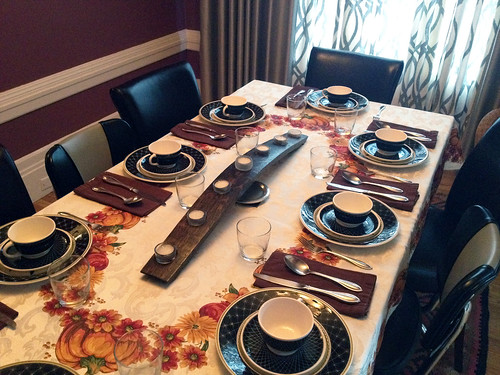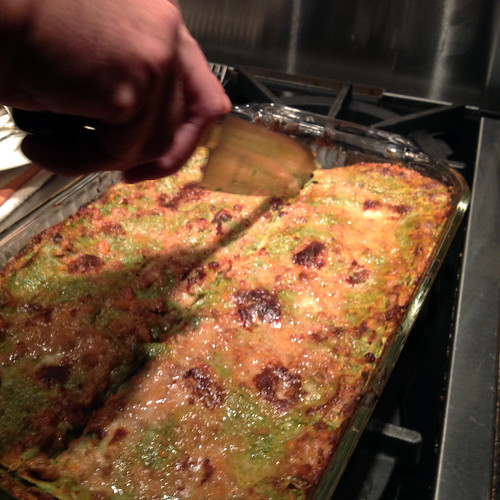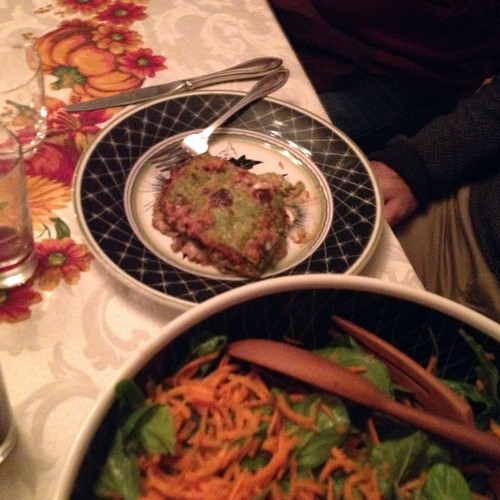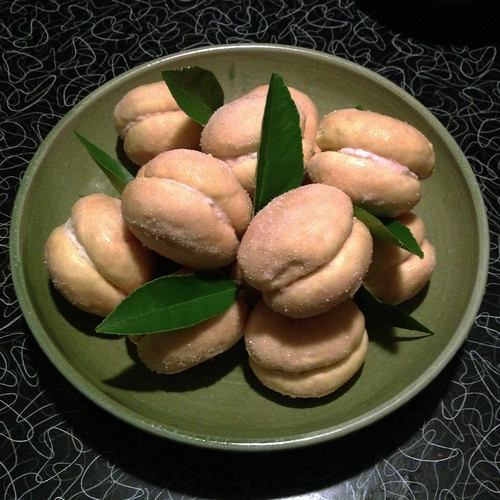Dinner with Marcella
It's entirely possible that, unless you are as obsessed with food, and in particular Italian food, as I, that you may never have heard the name Marcella Hazan. Even more ironically, her name is unfamiliar in her own hometown of Cesenatico, Romagna, on the Adriatic coast. Yet Marcella will be remembered forever as one of the most lasting influences on the American palate for her writings on true, regional, authentic Italian food. And sadly, she passed away at the end of September at 89 years of age.
The food world reeled, and Cathy Barrow, community leader extraordinaire, proposed an event, an evening where folks all around the country, indeed the world, would host a dinner party in her honor, cooking from her books and sharing pictures and stories with the #dinnerwithmarcella hashtag. And so it was that we eschewed a couple Halloween parties (we had no inspiration for costumes anyway) and constructed a menu.
However, because we're terrible at coloring within the lines, we went off script.
For an appetizer, we served up some ciccioli I helped make with friends the previous week. (OK, actually? I hung around, drank a glass of wine and ate pickled lamb's tongue, and then I had to leave to get to a dinner party before the real work started.) The recipe came from In The Charcuterie
When I brought a group to Cesenatico, Marcella's hometown, last January for a week of hands-on DIY foodcraft, we made ciccioli as well during our day of salumi making. However, in their tradition, ciccioli are crisps of fat solids, a byproduct of rendering the copious amount of lard on a hog. Anyway, while the recipe was not from Marcella, at least I have a ciccioli connection to her by way of birthplace.
From there on, we got back on the Hazan train, sticking to simple, traditional fare, starting with a nice, straightforward minestrone.
For the main, we knew we wanted to do lasagne. Little known fact: True lasagne originates from Romagna. And unlike the Americanized version, with too-thick noodles and gooey slabs of cheese, lasagne is multiple layers of gossamer-thin noodles, layered with a combination of bolognese sauce and a thin bechamel -- and no cheese, other than a light dusting of grated Parmigiano-Reggiano on each layer.
This is where Hazan's famously prickly writing comes into play. In discussing lasagne noodles, she admonishes, "it might take a little more time to run pasta dough through a machine than to go to the market and buy a box of the ready-made kind, but there is nothing packed in a box that can lead to the flavor of the lasagne you can produce in you kitchen. Using clunky, store-bought lasagne may save a little time, but you will be sadly shortchanged by the results."
Of course, she is right, and in fact making pasta is easy, and fun. We chose the recipe that calls for green pasta, made with spinach. Again, Hazan lashes out: "Outside of spinach, no other coloring can be recommended as an alternative to basic yellow pasta. Other substances have no flavor, and therefore have no gastronomic interest. Or, if they do contribute flavor, such as that of the deplorable black pasta whose dough is tinted with squid ink, its taste is not fresh. Pasta does not need to be dressed up, except in the colors and aromas of its sauce." Well, all righty then. Green pasta it is.
I love making pasta, the cool touch of the noodles on the skin as they drape over your hand, the silky texture. Is there any more sensuous food in the world?
Lasagne is not technically difficult, but it is laborious. Beyond just making the noodles, made additionally complicated by having to cook down and squeeze out spinach for green pasta, they must be blanched, shocked, drained, and patted dry before beginning composing the lasagne. Why? Take it away, Marcella: "The washing, wringing, and drying of pasta for lasagne is something of a nuisance, but it is necessary ... because if lasagne pasta is not kept very firm at this stage it will become horribly mushy later when it is baked. And you must afterward rinse off the moist starch on its surface, or the dough will become glued to the towel on which it is laid out to dry, and tear when you are ready to use it." A pot of bolognese and a pan of loose bechamel later, we assembled our lasagne, and it baked up a dream.
We served it with perhaps the simplest salad in the book, grated carrot and arugula, simply dressed with red wine vinegar, olive oil and salt.
For dessert, we went against the grain again. In an alternative way of honoring Marcella, I wanted to cook from Rosetta Costantino's excellent new book, Southern Italian Desserts
One recipe in particular that I've been fascinated with since her first (and also excellent) book, My Calabria
But you know I'm a cursed baker, right? So while the cookies should be smooth and round, bulbous as a baby's butt, mine were gnarled and lumpy, with cracks that gashed across the surface. Luckily dpaul came to the rescue, and his batch looked positively peachy keen.
Mine? Not so much. More like pesche organiche. And the addition of the alkermes liqueur made matters worse, settling into the grooves and crannies like a bloodied brain. Had I a better sense of humor about it, I might have tried to convert them into Halloween treats.
I'll stick to pasta making.







